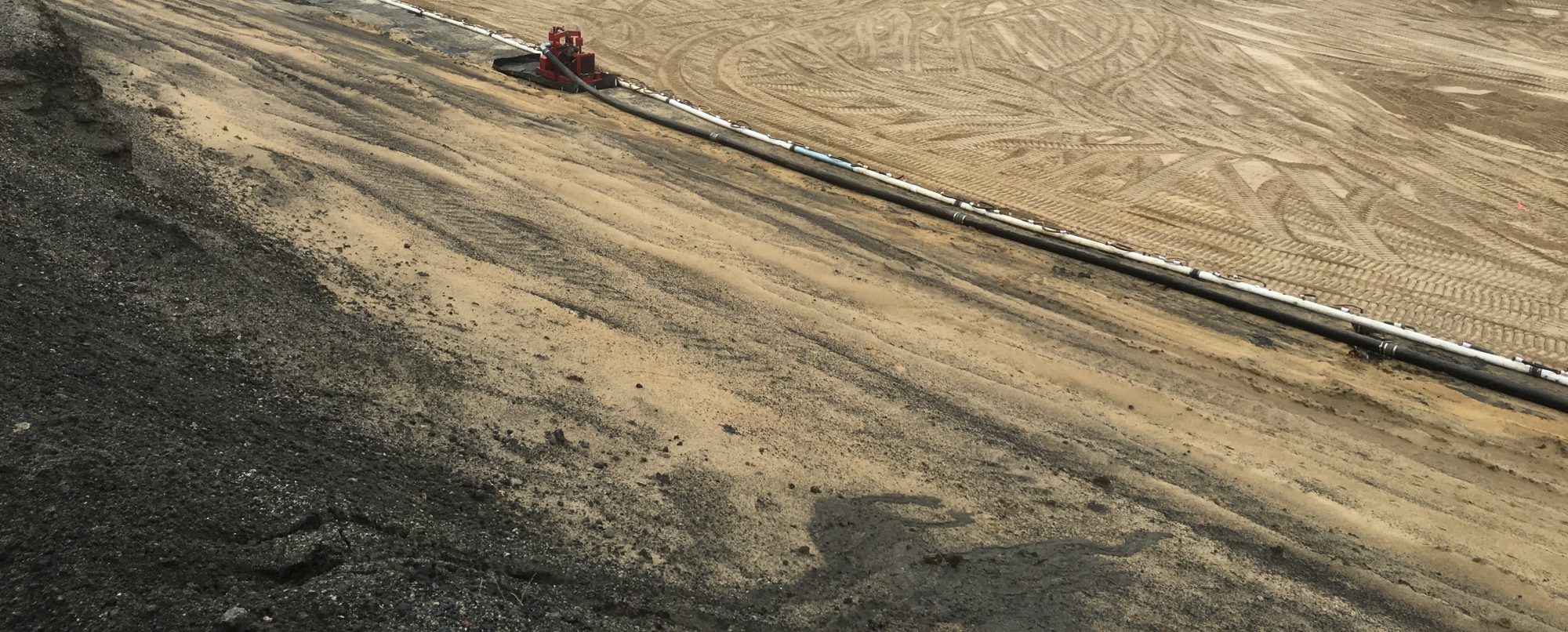Sulfate in concrete has connotations of being negative and causing durability issues. Issues with sulfate in concrete do emerge when there is too much sulfate present, but it is actually a necessary component in a concrete mixture. As part of a concrete mixture, sulfate reacts with calcium aluminate in the cement, to help control the time of set, and reduce drying shrinkage. When too much sulfate is present in the mixture, degradation of the concrete can occur
Sulfate is a necessary component in concrete
Sulfate is added to concrete mixtures for the purpose of controlling the time of set. Setting in concrete starts to occur when water mixes with calcium aluminate in the cement and starts to form a gel. This aluminate gel reacts with sulfate present in the concrete mixture to form ettringite. This retards the hydration of the aluminate phase. The right amount of sulfate is different for different batches, and is typically present from the clinker, and from added gypsum. Too little sulfate can cause flash set can occur. Too much sulfate can cause false-setting as well as deterioration problems. The variables that affect what the appropriate sulfate content is are aluminate content, aluminate reactivity, and the solubility of the different sulfates present.
too much sulfate in concrete can lead to durability issues
When sulfate is present in excess in concrete, sulfate attack can occur. Typical distress mechanisms observed with sulfate attack are cracking of the concrete, micro-cracking, loss of aggregate bond, and expansion of the concrete. Sulfate can be introduced into the concrete from external sources, or be inherent to the concrete mixture.
The most common form of sulfate attack occurs when there is excess sulfate in the concrete that leads to the formation of ettringite (calcium trisulfoaluminate, C4A3S.) Ettringite forms by the reaction of tricalcium aluminate, water, sulfate, and calcium hydroxide. The formation of ettringite is an expansive process, increasing the volume by as much as 815% compared to the tricalcium aluminate molecule that is consumed during the reaction. This expansion is the cause of most of the deterioration due to sulfate attack. Expansion and cracking occur because the ettringite crystals form in the pores of the concrete, without sufficient space for the crystals to form, thus exerting pressure and stress on the surrounding concrete. Figure 1 shows a post-hole grout for a gate that was exhibiting sulfate attack. Expansion of the grout caused the surrounding concrete to crack. As well, the grout was severely deteriorated to the point where the grout was easily removed without any tools. This sulfate attack was caused by too high of a sulfate content for the wet conditions the grout would be exposed to.

Delayed ettringite formation (DEF) is a form of internal sulfate attack caused by the formation of ettringite crystals, after the concrete has cured. It is typically seen in concrete that has been cured at elevated temperatures. It occurs because the ettringite cannot form at the elevated temperatures in the mix water. After the concrete cures and cools down, the ettringite then is able to form, causing distress to the concrete.
Excess sulfate in the concrete can also lead to the formation of thaumasite (CaCO3·CaSO4·CaSiO3·15H2O,) which is a sulfate molecule that is chemically and structurally similar to ettringite. Thaumasite is significantly less soluble at cooler temperatures, so a saturated solution of thaumasite at 20°C will precipitate out of solution if the temperature decreases. The precipitation of the thaumasite crystals stresses the pores of the concrete, causing expansion and deterioration. Because thaumasite has the propensity to precipitate out at cooler temperatures, deterioration caused by thaumasite is more common in cooler climates.
Internal and External Sulfate Attack
Sulfate attack is identified as internal or external sulfate attack. Internal sulfate attack describes sulfate attack that occurs in concrete in which the source of the sulfate is inherent to the concrete mixture. Internal sulfates come from many possible sources including mix water, aggregate, cement, and other additives included in the concrete mixture. External sulfate attack describes sulfate attach that occurs when the source of the sulfate is external to the concrete mixture. Common sources of external sulfate include ground water and soil. Deicing salts can also contribute to sulfate attack, where sulfate is sometimes present as an impurity.
For more information contact Matt Anderson at 847.306.9240 or manderson@materialsanalyticalgroup.com. And for 15% off our services, let us know you have been reading our articles before receiving your invoice.
References
Federal Highway Administration. (2002, March). Guidelines for Detection, Analysis, and Treatment of Materials-Related Distress in Concrete Pavements. Retrieved from US Department of Transportation: https://www.fhwa.dot.gov/publications/research/infrastructure/pavements/pccp/01163/app.cfm
Portland Cement Association. (2002). Types and Causes of Concrete Deterioration. Retrieved from Portland Cement Association: https://www.cement.org/docs/default-source/fc_concrete_technology/durability/is536-types-and-causes-of-concrete-deterioration.pdf?sfvrsn=4
WHD Microanalysis Consultants Ltd. (n.d.). Sulfate Attack in Concrete. Retrieved from Understanding Cement: https://www.understanding-cement.com/sulfate.html

